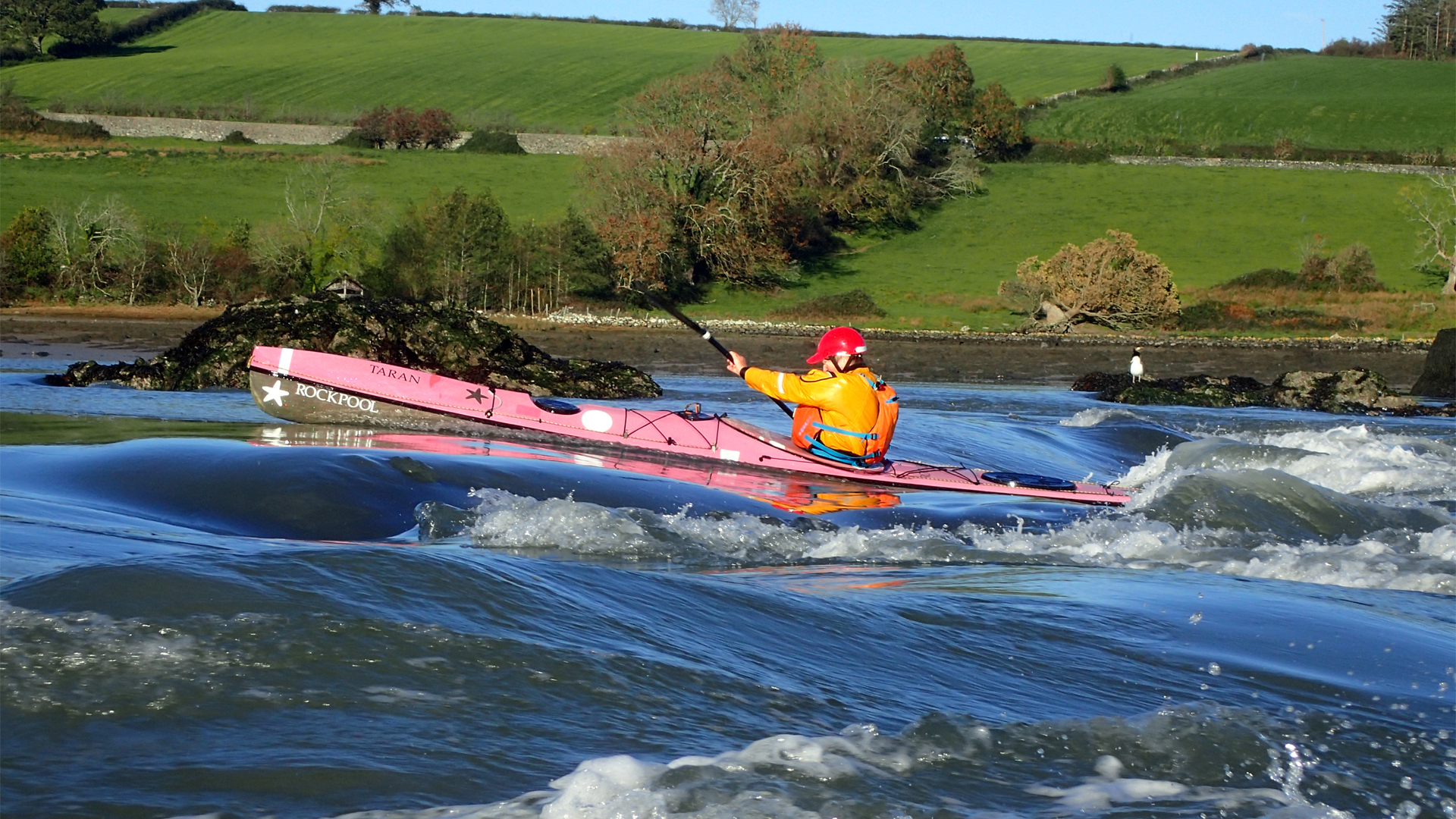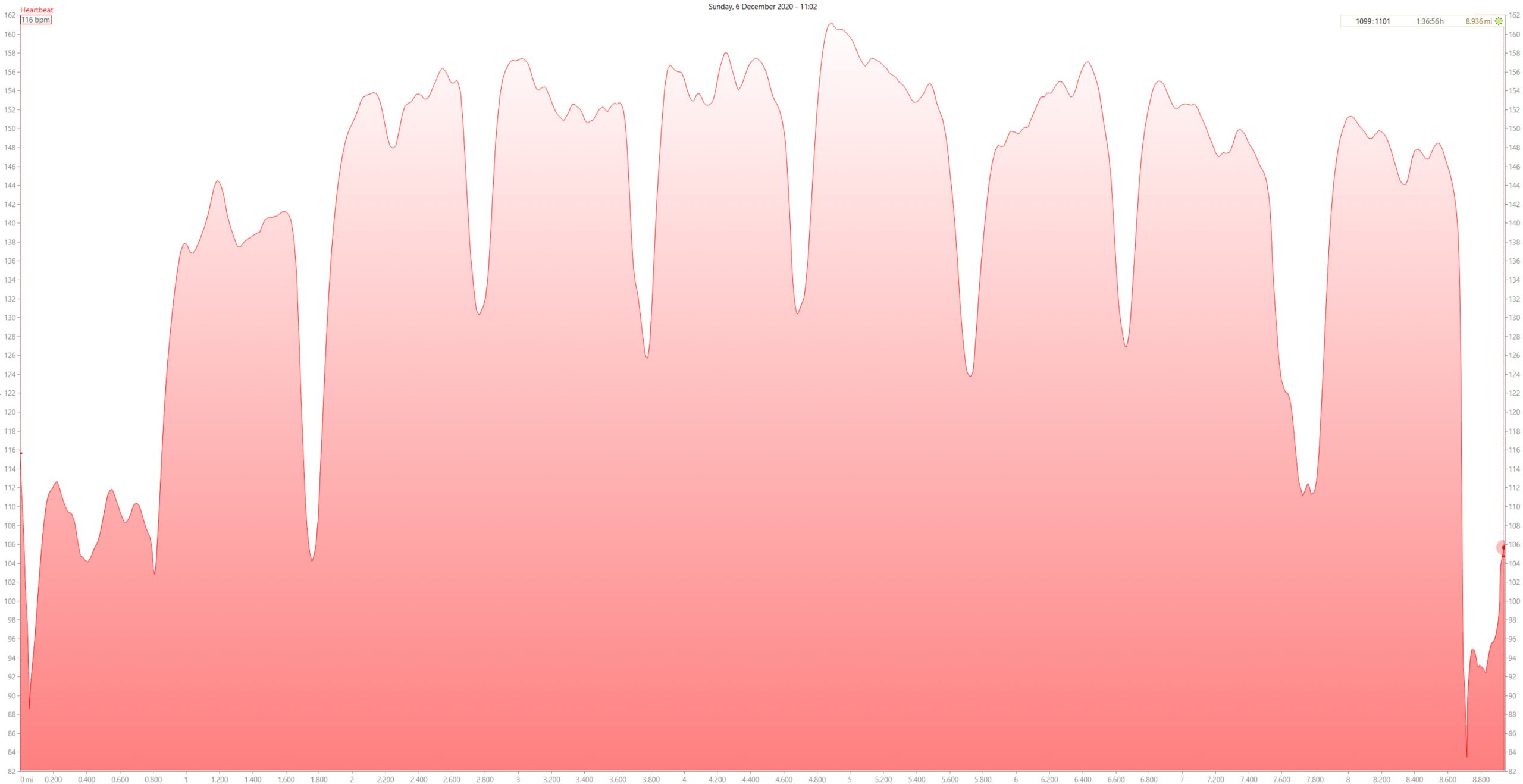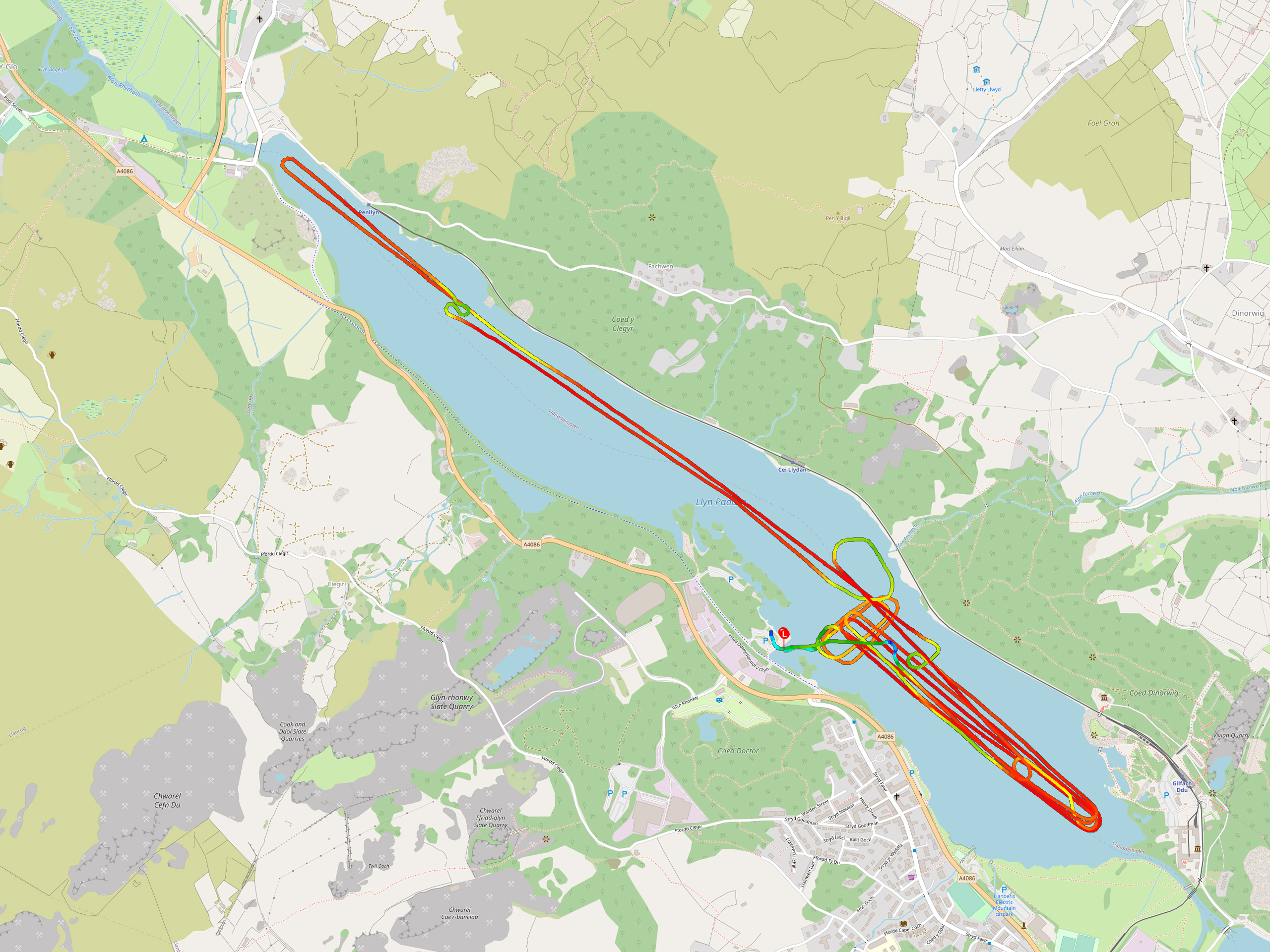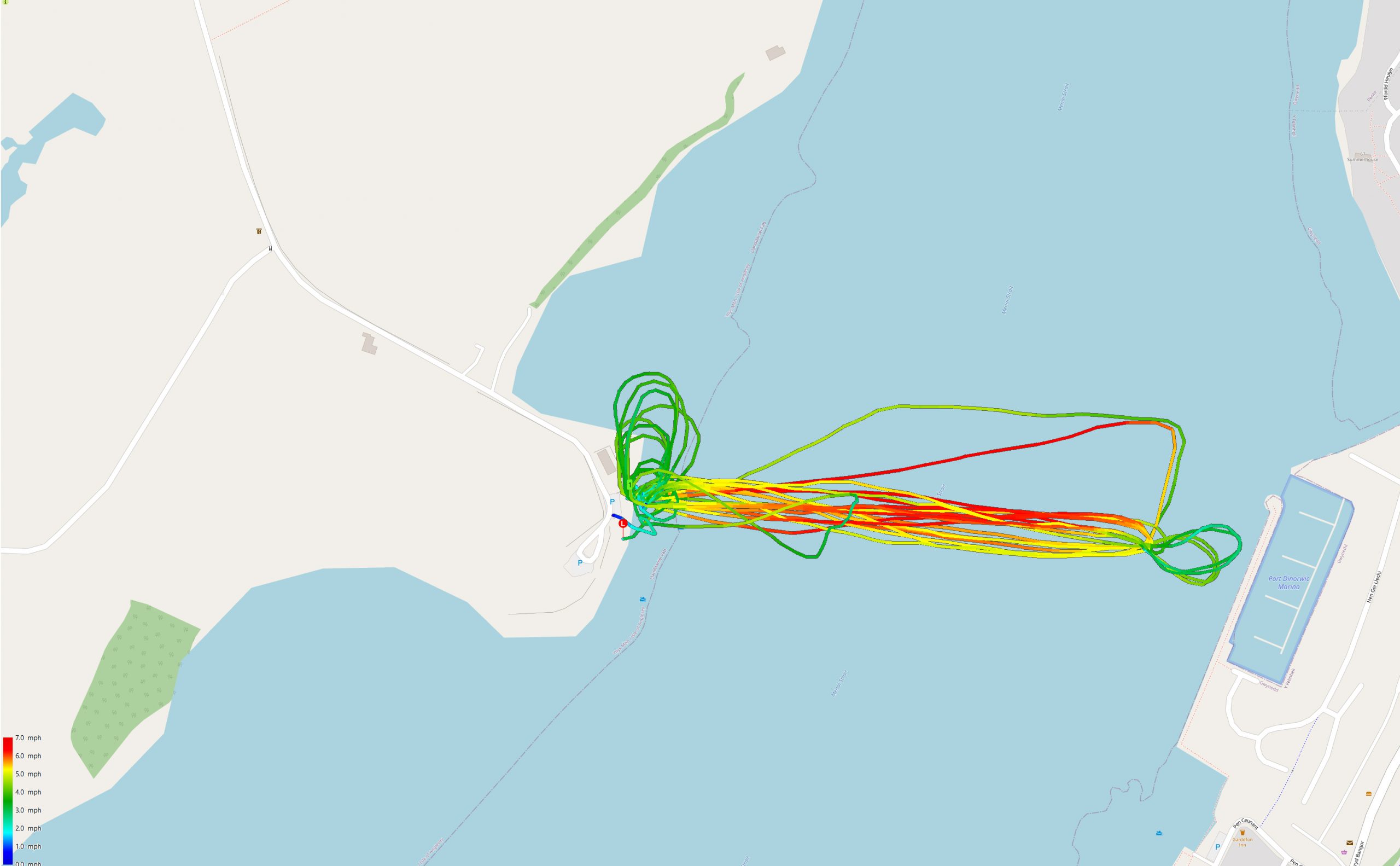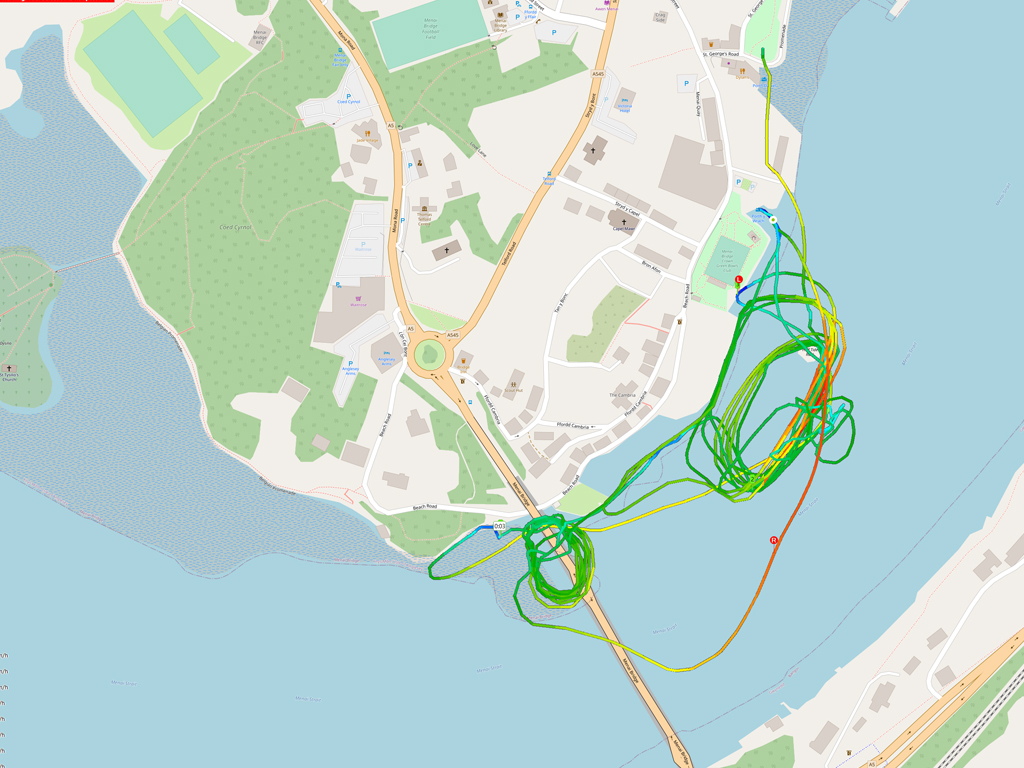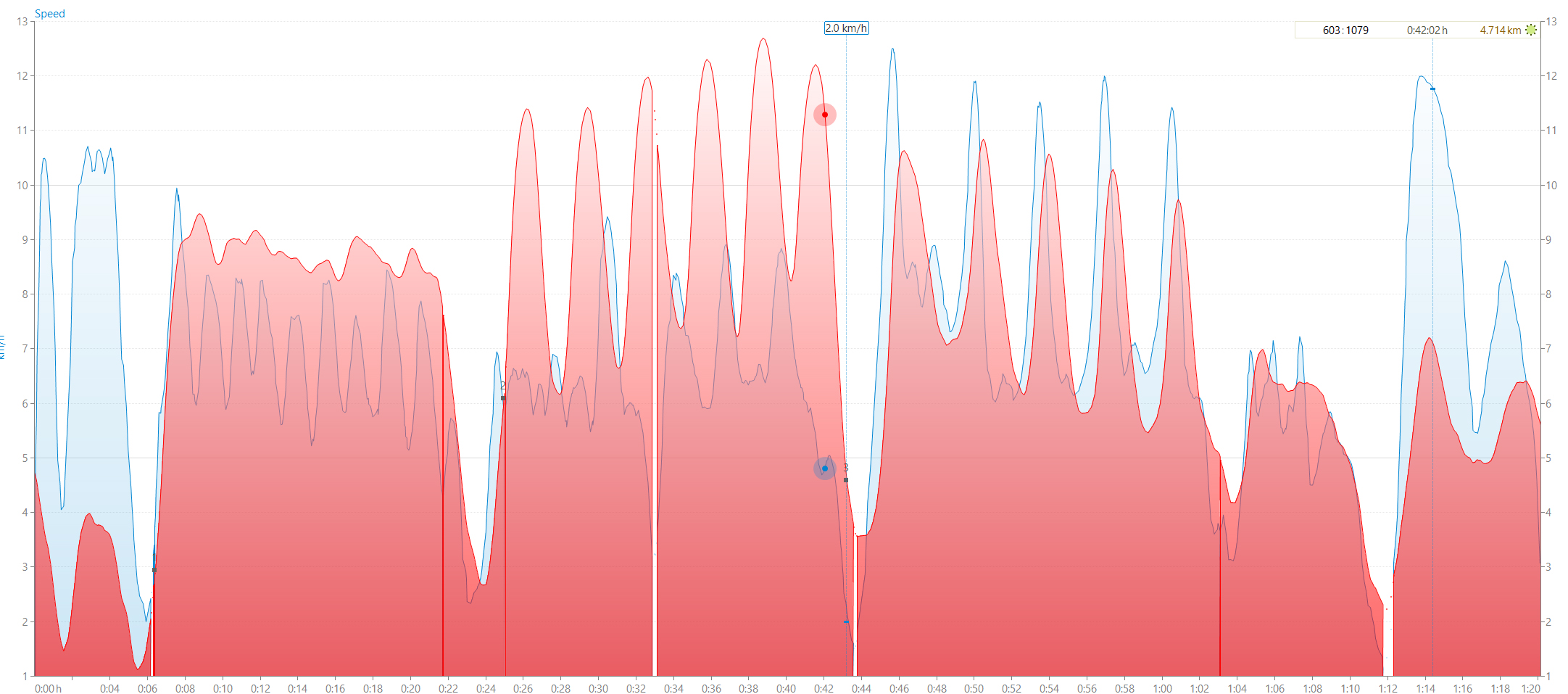Each month we’ll take a look at a specific training session. This is not an example training programme, but rather examples of training sessions that you may find useful to incorporate in your own programme.
Contents
These are all sessions that I use regularly. Most of them date back to my time as a GB Team paddler, over the years I have tweaked and adjusted them to fit nicely into my sea kayak training.
To get the most out of them you’ll need:
A Heart Rate Monitor (HRM)
A watch with stopwatch function/repeat alarm.
A bit of basic arithmetic.
Intensity – each session will include a desired heart rate (HR) to work to. This will usually be as a percentage of your max heart rate (not heart rate range) i.e. if your max HR is 200 bpm then 70% means to paddle with 140 (200 x 0.7) showing on your HRM.
Note: While HR can be a surprisingly accurate indicator of work intensity, it can also mislead, varying significantly from day to day. Factors such as sleep, stress, fatigue, health and fitness can all affect your max HR from one day to the next. HR is only ever a guide.
If you don’t have access to a HRM than you can work to a perceived intensity level using the percentage figure as a guide i.e. 70 % means you will work at a perceived level of 7 out of 10, where 10 is your absolute max. This method is less precise and needs plenty of practice.
1) – 140 Cruise
Paddle at a constant pace, maintaining the desired intensity for the duration. Simple. The point of this session is to have a steady paddle, with just enough intensity to provide good technique and some light fitness return.
Note:The name ‘140 Cruise’ has stuck from the early days. As I have aged (and my max HR lowered) the actual pace has lowered too, hence the quoted percentage figures to work too, rather than the original 140 bpm.
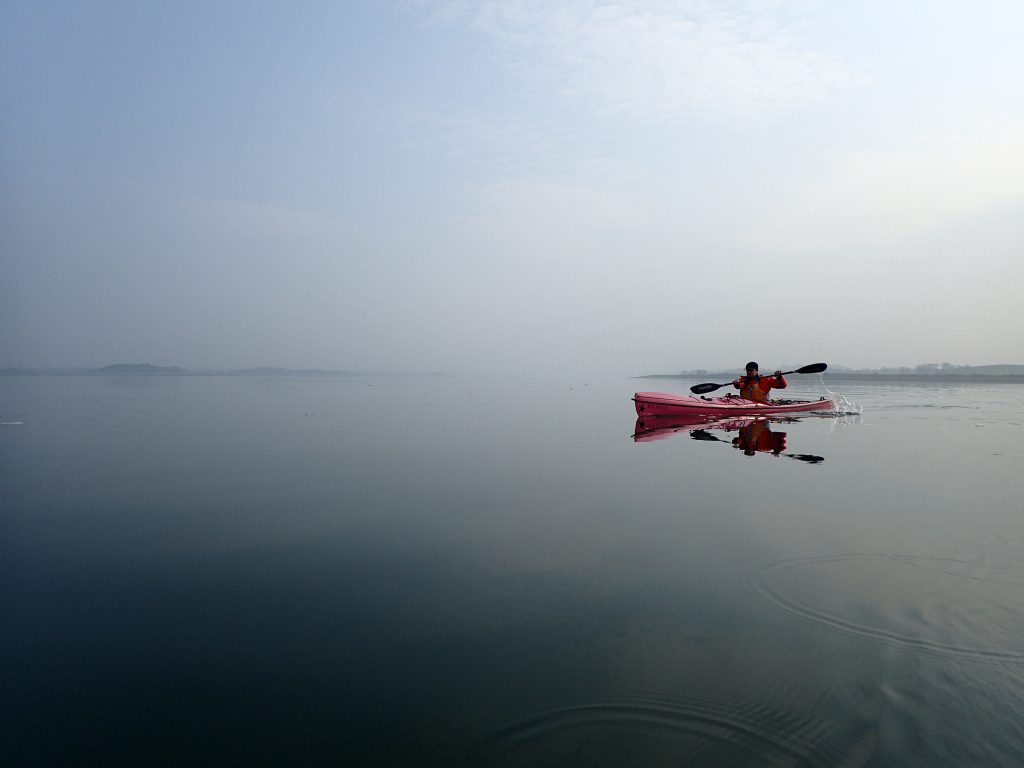
Good For:
This is used as a shakedown session after a break in training, or as a recovery session during a hard training block.
Format:
This is a simple session. Paddle at a steady pace – maintaining around 68-72% max HR. Remember, the point of this session is to have an easy paddle – don’t go above 75 %.
Where:
Easy, sheltered water.
Levels:
Level 1 – 30 mins at 65-70%
Level 2 – 40 mins at 70%
Level 3 – 50 mins at 70%
If you are new to this sort of thing, then maybe consider a pace of your Warm-Up (W.U.) pace + 10% (of max HR).
Thoughts:
Take the opportunity to work on your paddling stroke – smooth and fluid. Feel what is going on: boat, body and blades.
Concentrate on keeping things consistent – try to keep the HR as constant as you can.
This is always my first training session back after a gap of two days or more from a boat – the ‘shakedown’ paddle.
2) – 8 Min on – 2 Min off
Paddle at a ‘fast maintainable’ pace for 8 minutes, followed by 2 minutes at recovery pace, repeat.
This sessions is aimed to combine work on medium-level fitness and technique together.
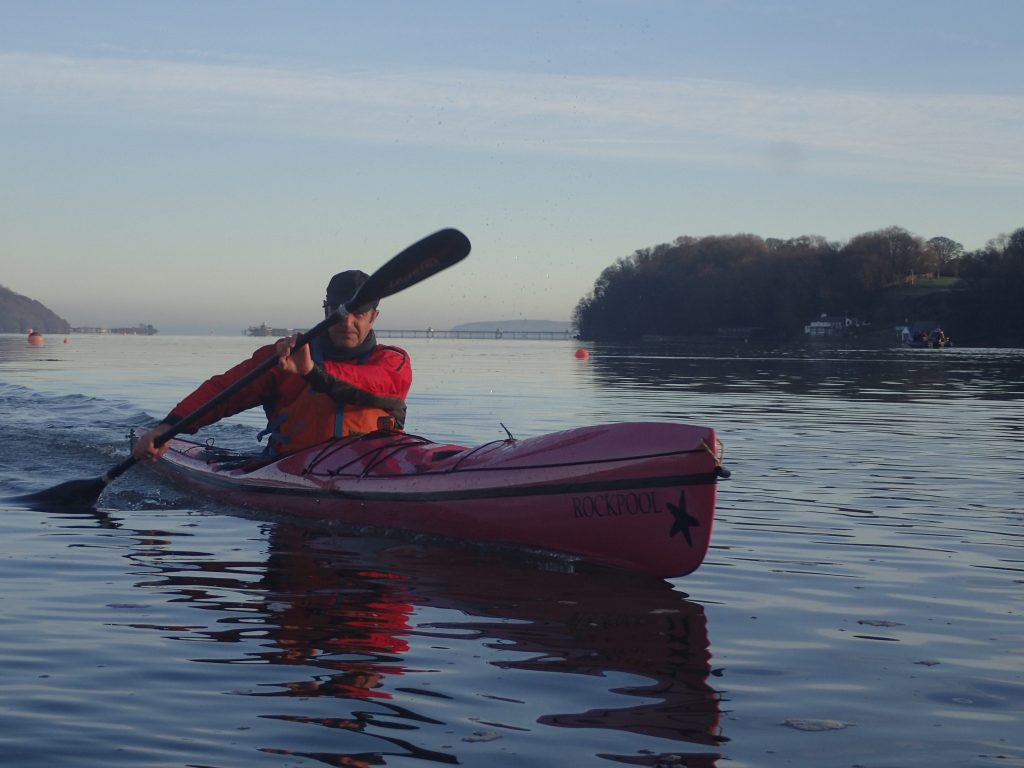
Good For:
Improving fast-cruise fitness and pace-consistency. It is also a good exercise to work on ‘duration technique’ – the intensity is high-enough to gain a fitness improvement, but not so high that technique should start to suffer.
Format:
Paddle at 80% for 8 minutes, then drop back to just above W.U. pace (~65% or just below) for 2 minutes, repeat.
Remember the pace should be a ‘fast maintainable’ pace , but a slight challenge too -i.e. above ‘conversation’ pace.
Where:
Start on easier water until you have developed good consistency and pacing, then you can tailor it for any water, conditions and intensity you want to work.
Levels:
Level 1 – 3 repetitions – 75%
Level 2 – 5 repetitions – 80%
Level 3 – 7 repetitions – 80%
Thoughts:
Another great opportunity to work on your paddling stroke, this time at a slightly higher intensity than the 140 Cruise – reach the pace and then aim to keep your stroke smooth and consistent, while maintaining this constant pace.
Don’t underestimate this sess – it may take more out of you than you think.
Want to go harder? Once you are fully warmed-up, try lifting the ‘on’ intensity by 5 bpm on each new effort, and go for 4, 6 or 8 reps.
3) – Squares
This is an interval session paddled over a square course on open or moving water. It uses environmental conditions to add a technical challenge from 4 different directions.
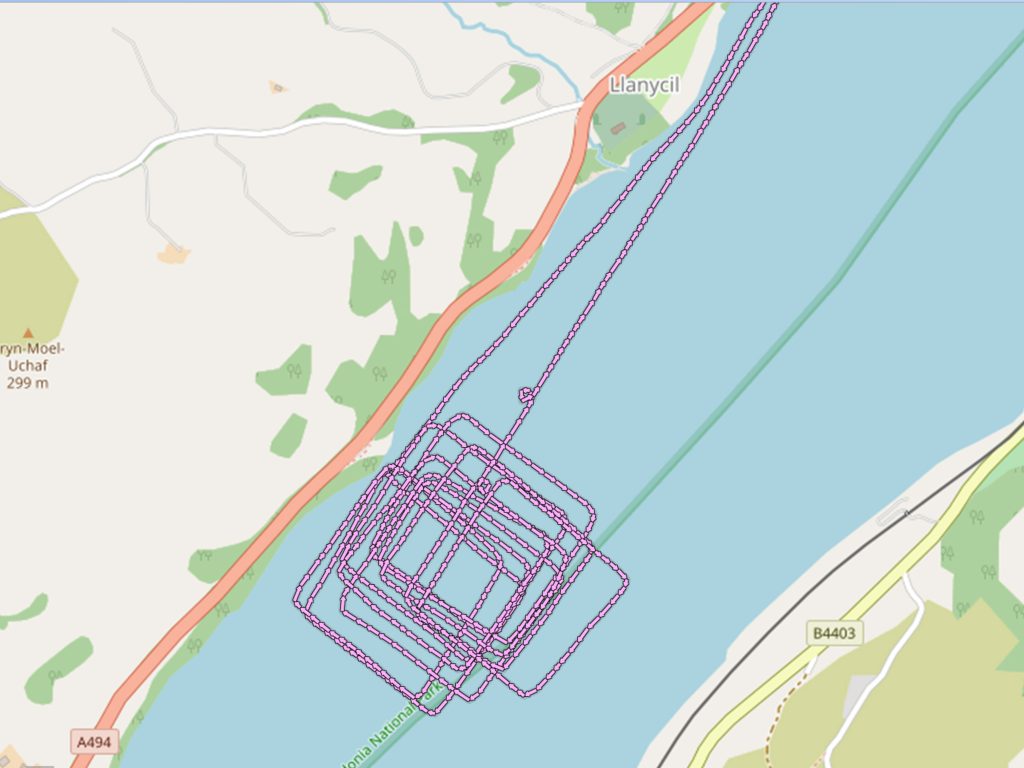
Good For:
On top of fitness, this improves technique when paddling into, down and across wind (or flow or chop).
Format:
Paddle a square course, with a 90 degree turn (to the same side) at the end of each leg – 4 legs completes the square (1 lap). This means, on each square you will paddle with a headwind, a tailwind and a beam wind on either side.
This is an interval session, each effort comprises a number of hard legs, followed by a number of easy legs – this gives our work to rest ratio. Each leg is one side of the square.
To prevent experiencing the same conditions on each leg from one lap to the next, we use an odd number of legs per effort. This ensures the conditions vary on each effort for your hard/easy legs.
WHERE:
Open or moving water with some wind (or flow, or chop). You need a bit of space for this session.
Levels:
Level 1 — 1 leg hard – 2 legs easy – 6 efforts (1 min legs)
Level 2 — 2 legs hard – 1 leg easy – 6 efforts (1 min legs)
Level 3 — 2 legs hard – 1 leg easy – 6 efforts (2 min legs)
Level 3+ — 4 legs hard – 1 leg easy – 4-5 efforts (2 min legs)
Thoughts:
This session is all about maintaining your paddling stroke while pulling hard in conditions. Concentrate on your stroke timing through the waves/chop to maintain a smooth movement of the boat.
Don’t ease off on the downwind leg, learn how to push through the waves.
Paddle directly across the wind when on a beam leg (i.e. square to the waves) for greatest exposure.
On moving water paddle directly across the channel, use enough ferry angle to ensure a ground-track without any drift up or downstream – be accurate and disciplined here.
Turn the whole square through 45 degrees if you want to work conditions coming from each quarter (bow/stern – left/right) rather than end-on/beam.
This session also works when paddled inside the surf zone, for small surf.
I like this sess, it provides an added challenge and a bit of fun to an interval sess.
4) – Locomotor
This interval session works a variety of short-to-mid length efforts, providing high-intensity development of speed-endurance. While the session intensity gives a combined improvement in both endurance and speed. Recovery is kept relatively short to provide an ongoing fatigue-load aspect too. Work hard enough and this fatigue challenges your technical aspects later.
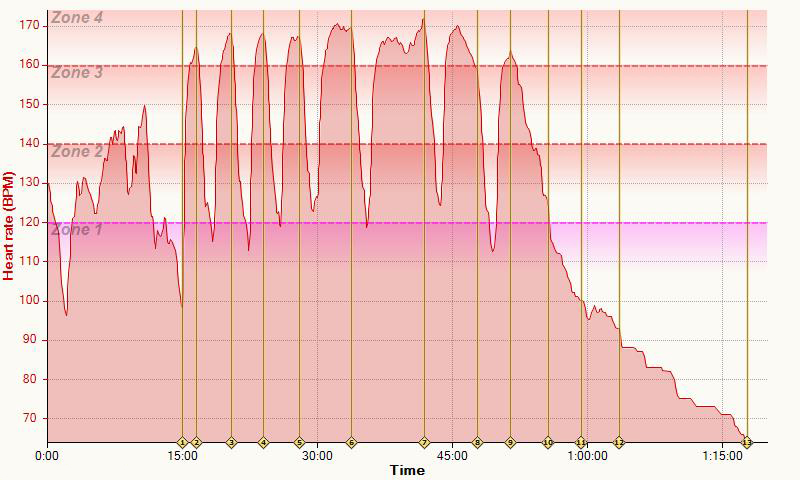
Good For:
Stretching fitness levels at high-intensity over longer duration intervals, and working on technique as fatigue starts to creep in…
Format:
This is a straightforward interval session, work efforts followed by an easier recovery interval. Though this may look like a pyramid -session it is actually a Locomotor- recovery intervals stay constant (at 2 min) while work efforts grow longer (a 1x, 2x or 3x multiple of the shortest work effort length). This brings about an increasing fatigue aspect as the session progresses.
4x short
1x mid
1x long
1x mid
4x short
The session can be run linear, or the multiples aspect allow you to work in a relatively small area, with a turn after each leg.
WHERE:
Pretty-much any bit of water will do, working across flow or wind adds a useful dimension to the fatigue/technique aspect.
Levels:
Level 1
1 1/2 min hard – 2 min easy – x4
3 min hard – 2 min easy – x1
4 1/2 min hard – 2 min easy – x1
3 min hard – 2 min easy – x1
1 1/2 min hard – 2 min easy – x4
Level 2
2 min hard – 2 min easy – x4
4 min hard – 2 min easy – x1
6 min hard – 2 min easy – x1
4 min hard – 2 min easy – x1
2 min hard – 2 min easy – x4
Level 3
2 1/2 min hard – 2 min easy – x4
5 min hard – 2 min easy – x1
7 1/2 min hard – 2 min easy – x1
5 min hard – 2 min easy – x1
2 1/2 min hard – 2 min easy – x4
Effort lengths are approx, adjust as required – but you get the idea.
Thoughts:
This session is about pushing the limits for effort lengths a little beyond the usual and comfortable. It’s difficult to maintain the intensity and it takes discipline to preserve technique as fatigue sets in – both during each interval, and as the session progresses.
Greater gains comes from setting the course across flow/wind or sea – try to set your ferry-angle tight too – and then aim to hold it all together as you push hard.
You can work this session at any intensity level you want – emphasising the physical or technical ends of the spectrum as desired. But to be honest you should really be pulling hard – unless you have a note from your Mum.
Keep an eye out for boat traffic, obstructions etc. as you get lost in your little world of hurt.
Want to ‘go monster’? Make it a ‘flat-top’ – do 2 of the longest efforts before you start to drop back down.
I like this sess on a breezy day at Moel-y-don, trying to hold the crosses together in wind and tide as I get tired – a microcosm of record-attempt day.
5) – Choppy Crosses
The idea is to work a pyramid sess on crosses, across the flow and wind. Aiming to hold the line, especially as fatigue sets in.
GOOD FOR:
Maintaining technique in dynamic conditions and wind, whilst increasing the fatigue-load.
FORMAT:
The aim is to work across the flow/wind, while aiming to hold the line as straight as possible, minimal climb or fall from the track line. Also aiming to maintain a smooth stroke through the conditions on each cross and throughout the session as a whole, as the fatigue increases later.
Pyramid:
4 x single cross
2 x return cross
1x longer triangle (extra turn buoy added)
2 x return
4 x single again
Each cross ~ 2 min 30
Rest ratio ~ 2/3rd of work
WHERE:
This sess needs a certain set of conditions i.e. a wide flow with an opposing wind. For me this works well at Moel-y-don (Menai Straits) on an ebb tide with an opposing S wind showing of 20mph+ showing at Valley. Conditions ~ 1ft – 2ft chop (more 1 than 2)
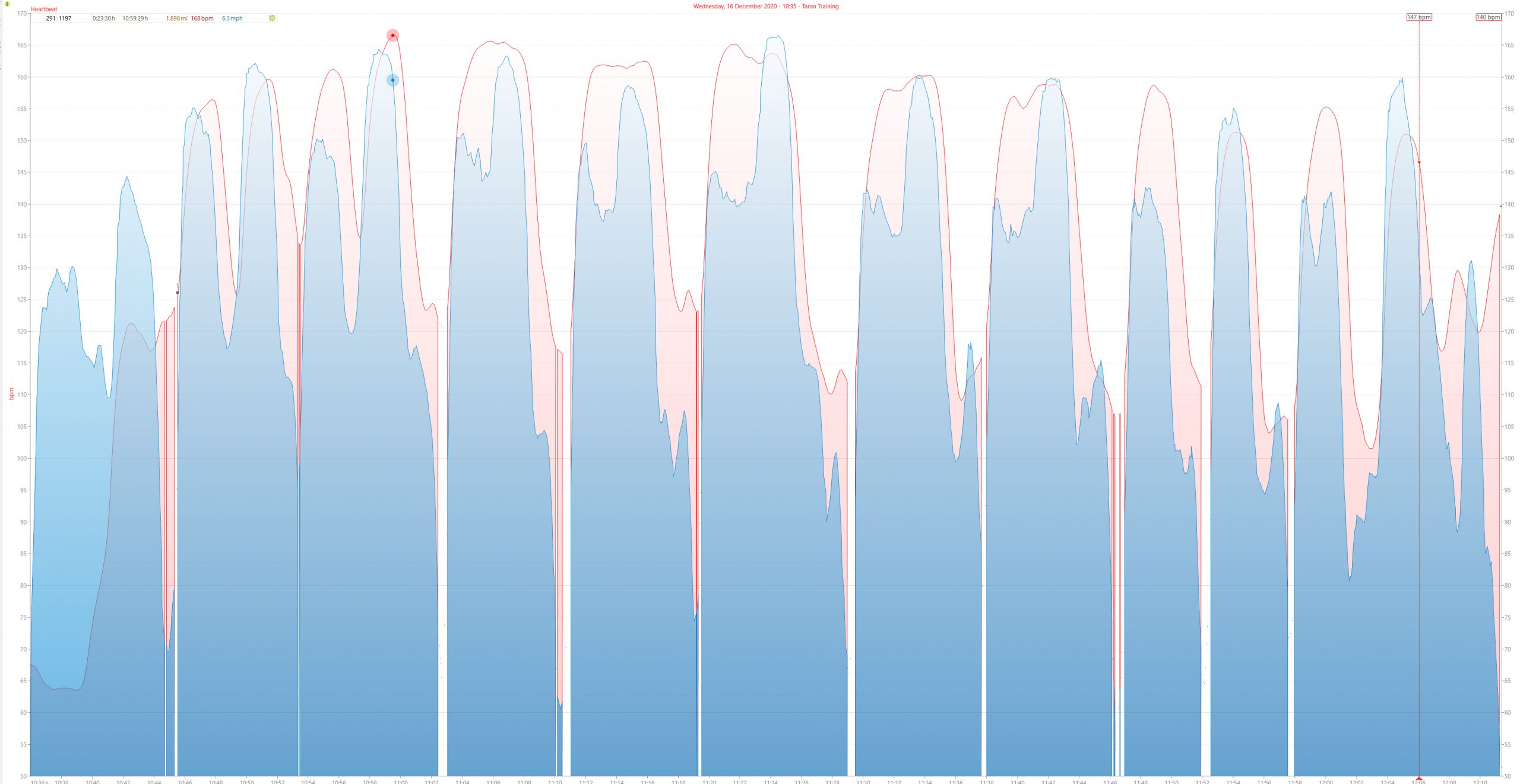
THOUGHTS:
This provides a good combination of a technical sess with a decent fitness element too – the interaction of the two aspects is very useful.
The technical element works both boat handling (in cross-wind, flow and beam chop) and also paddling stroke in beam conditions. Early on it is time to develop the technical, later it is about maintaining smooth running and control of the boat as fatigue sets in. From this point of view, this is also a ‘familiarisation’ session.
Be very disciplined on the crosses. You will get much more out of the sess by holding your line accurately. Do not drift up or downstream from the desired track.
It is noticeable from the graph that HR on efforts after the ‘peak’ was lower as a whole – due to technique or fitness aspects?
This session can be as challenging as you make it, but take care. Moving water, strong winds and fatigue together can be a dangerous combination. Dial it all back if you are paddling alone especially.
6) – Perch Push Throughs
The Perch in question sits on top of half-tide rock in Menai Bridge. On the early ebb the rock is covered, and during a strong SW wind the area of faster flow down either side of the rock can kick up a small section of wind-over-tide waves.
These waves make a great area to work on ‘push-throughs’ and also on paddling down through a wave trains. While this has aspects of a ‘physical’ session, the main emphasis is actually technique and technical. (The ‘push-through’ here is paddling with following waves and pushing over/through to catch the wave ahead.)
GOOD FOR:
Technical boat-handling and feel. Learning how the wave-packets form and move and how to time the application of power. Understanding the feel for the trim of the boat.
FORMAT:
A set of upstream/downwind efforts – full gas all the way. Learn when you can push-through the waves and when you can’t.
Followed by a downstream set. Here you are looking to maintain max boat speed. Choose your line through the waves, time your strokes and modulate your stroke-power to keep a smooth, flat and dry ride. You are trying to avoid any pitching of the boat and water across the deck.
5x upstream to start – each effort ~90″
5 x downstream ~45″ per effort
The aim to use the upstream efforts to go hard and catch the wave in front and then push through it as soon as possible. Then repeat ad infinitum until the top of the wave train. No surfing, constantly pushing hard into the back of the wave ahead. Working and waiting, picking your moment to ‘push through’.
Turn down the side channel, gentle back to the start and repeat the effort.
On the downstream efforts the aim now is to paddle hard down the wave train. Trying to keep the boat flat across the tops of the waves. Where they become too large, or the wavelength too long, then the aim is to paddle through the ‘gaps’ to keep the boat as flat (and as fast) as possible.
All worked close to max. Rest ratio depends on the location and conditions. If it’s winter and blowing then rest is just paddle back. In warmer times, then the usual work/rest ratios apply.
WHERE:
This session is very location specific. You need a paradoxically sheltered spot with some flow and an opposing wind to provide 1ft+ waves. The waves need to be of a uniform direction for it to work well.
THOUGHTS:
Upstream efforts allow work with higher stroke rate and lower blade loads.
Downstream efforts (into wind) contrast, with a lower stroke rate and higher blade loads. (A ‘double sess’ once again).
Each effort starts and end with a 180 degree turn – so by the end of the session you have also practiced 20 strong-wind turns.
On the paddle back review each run, put what you learnt into improving the next one.
This is an intense/condensed sess which is very useful in learning how to judge and make the most of running downwind wave-packets.
Go hard – it’s a short sess. The aim is to push the boat hard through waves, learning how to keep it running.
Once again rest ratio tends to depend on conditions and temperature. There are strong winds and a splashy environment. So just stay warm and get the work done. Take the minimum rest to be effective on each effort – though it’s your call how lactic you want to make it.
Using larger waves will change the character of the sess. Larger waves will bring more of a ‘ride-then-push’ element to things. A useful session all the same. However don’t overlook the ‘push-through’ session. It a timing and feel skill useful to open water, that is rarely practiced by many.
It’s more fun than just slogging up and down too.
by John Willacy
